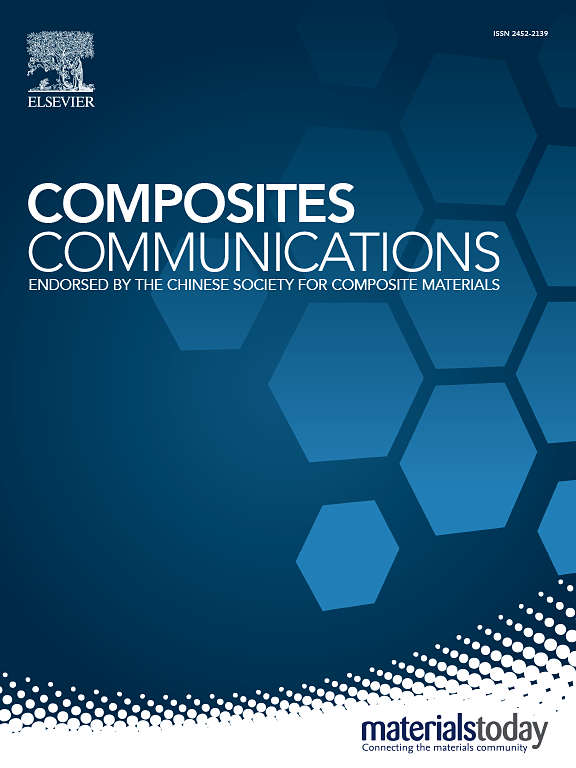3D-printing magnetic susceptor filament for induction welding of thermoplastic composite sandwich panels
IF 6.5
2区 材料科学
Q1 MATERIALS SCIENCE, COMPOSITES
引用次数: 0
Abstract
A magnetic susceptor in a printable filament form is developed for the induction welding of thermoplastic composites. The susceptor is based on Ni particles embedded in a poly-ether-imide matrix. It is extruded and spooled to form a filament which can then be 3D-printed. The susceptor produces heat by hysteresis losses due to the magnetic properties of the Ni particles. As opposed to other typical electrically conductive heating elements, no percolation threshold needs to be achieved to produce heat as the Ni particles individually heat up when exposed to the induction coil's magnetic field. The heating efficiency of the susceptor filament and its deposition by the fused filament fabrication technique are demonstrated. The susceptor is used to assemble all thermoplastic composite sandwich panels. The sandwich samples are tested by the flatwise tensile test and a tensile strength of 4.6 MPa is obtained, which is equivalent to or higher than reported strengths for typical aerospace-grade sandwich panels. The printable susceptor opens the way to new induction welding or heating applications as it can be printed on a surface to produce a desired heating pattern.
求助全文
约1分钟内获得全文
求助全文
来源期刊

Composites Communications
Materials Science-Ceramics and Composites
CiteScore
12.10
自引率
10.00%
发文量
340
审稿时长
36 days
期刊介绍:
Composites Communications (Compos. Commun.) is a peer-reviewed journal publishing short communications and letters on the latest advances in composites science and technology. With a rapid review and publication process, its goal is to disseminate new knowledge promptly within the composites community. The journal welcomes manuscripts presenting creative concepts and new findings in design, state-of-the-art approaches in processing, synthesis, characterization, and mechanics modeling. In addition to traditional fiber-/particulate-reinforced engineering composites, it encourages submissions on composites with exceptional physical, mechanical, and fracture properties, as well as those with unique functions and significant application potential. This includes biomimetic and bio-inspired composites for biomedical applications, functional nano-composites for thermal management and energy applications, and composites designed for extreme service environments.
 求助内容:
求助内容: 应助结果提醒方式:
应助结果提醒方式:


